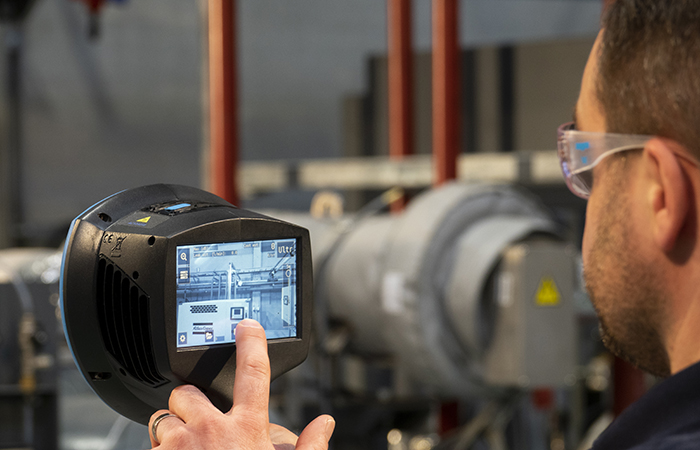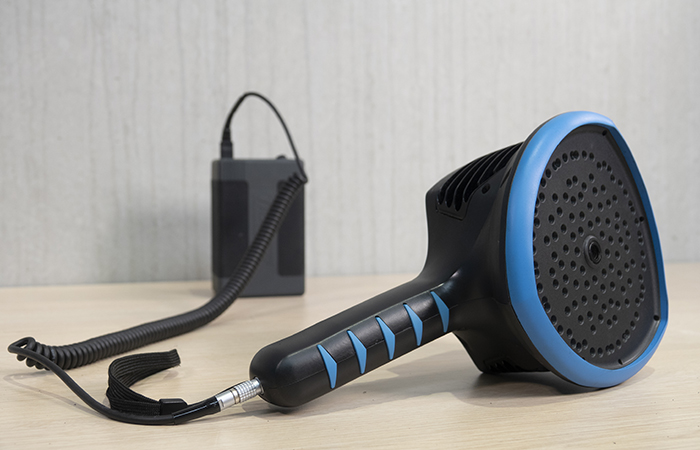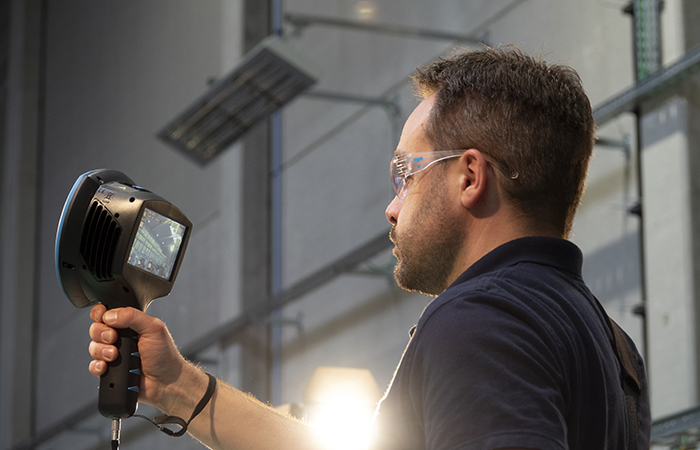
Paul Clark - Business Line Manager - CTS Sales, explains how compressed air systems health checks and energy audits carried out in an industrial environment can reduce costs, improve environmental performance, and help deliver energy efficiency improvements.
There is little doubt that energy efficiency remains a top priority for most manufacturing organisations – for both financial and environmental reasons. Cutting electricity use across the shopfloor can significantly reduce monthly energy bills, with the savings going directly to the bottom line.
Using less energy is also critical to long-term sustainability efforts. There is a growing number of companies embarking on a journey to net-zero by implementing initiatives that provide incremental value and significant savings over time.
The need to optimise compressed air systems
Even the most conservative analyses estimate that compressed air systems account for 10 per cent of all energy used in global industry, and of that, between 10 – 30 per cent is wasted on leaks. This wastage is expensive; even a 3mm leak could cost around £2,000 a year, with a loss equivalent to 16 tonnes of CO2 emission. So, any optimisation of compressed air systems – no matter how small – impacts performance and efficiency significantly, lowering fuel bills and reducing carbon footprints.
But how do plant managers ensure that a compressed air system is operating to its full potential? How do they identify and eliminate air leaks, optimise performance, reduce energy consumption, and drive down costs?
The simple and most effective means of achieving these goals is to carry out a health check and energy audit. These assessments can be performed quickly and accurately, and in some cases at no cost, and with zero disruption to the users’ production operations. Just one important aspect of these checks is identifying and eliminating leaks

Dealing with compressed air system leaks
Leaks can be caused by many issues including corrosion, poor pipe connections and bad seals. And without investigation, these problems can add up to a significant amount of wasted energy over time, resulting in higher bills.
There is a variety of techniques that can be employed to locate, log, quantify and rectify air leaks. Initial steps involve little or no technology. In fact, some leaks can be found simply by listening and their location can be identified by the elementary technique of applying a soapy water solution to potential leak points such as joints, flanges, and valves, with bubbling indicating the source.
A more precise approach employs advanced technology; the use ultrasonic leak detection equipment, which operates without interrupting plant production, reaches system areas that are hard to access, and locates all air leaks. Furthermore, state-of-the-art acoustic imaging cameras are even morer effective and can help detect leaks in compressed air systems up to ten times faster than traditional methods.
Once inspection has been completed, leaks can be marked on-site with weatherproof tags, along with a supporting written report that can provide more details on leak locations, photographic evidence of holes, leak severity in litres/minute, energy costs, positions, and costs to repair.

Health checks and energy audits for compressed air installations
With the technology in place to provide fast, accurate and cost-effective leak detection, leading compressor technology specialists, such as Atlas Copco Compressors, have developed three levels of health checks and energy audits for compressed air installation. Some of these services are offered free-of-charge, while others require an upfront investment which is quickly recouped through energy efficiency improvements, and the subsequent cost savings they bring:
Level 1 – Free visual inspection and energy potential calculations (EPC):
A visual assessment covers information such as compressor room environment, determining any air quality issues, and a visual inspection of all compressed air equipment on site, including appropriate capacity, ISO compliance, unproductive running, and pressure levels.
This procedure results in a summary of equipment health, outlining running equipment improvements, as well as wasteful practices or non-conformance with ISO standards.
EPC calculations can also be carried out, focussing on the power usage of the compressors, load v. unload hours, and average leak assessment. This calculation identifies whether there is a requirement for a Level 2 assessment and provides an indication of the tangible savings that it would bring.
Level 2- Energy assessment and recommendations through data logging:
While EPC delivers an estimation of potential energy savings, this next level service provides a real-world assessment based upon the findings of data logging equipment fitted to each compressor. The data logging devices record and then map the energy consumed over a full week period, showing the actual running hours and calculated air usage.
Based on this data, engineer specialists can then calculate a realistic energy savings potential, make simulations, and provide recommendations to achieve optimal energy efficiency. This service can also be free of charge and always provides high-quality, actionable insight.
Level 3 - Full audit to ISO 11011:2013 standard: The full audit service provides a premium assessment of a range of parameters, such as flow testing, air leak detection, air quality testing, measurement and analysis of pressure and dewpoint throughout the wider system, from compressor room to production processes. Included in the audit is reporting and discussions of the most suitable methods to reduce energy costs and CO2 emissions.
Energy audits and ISO 11011: 2013 standard
To ensure that installations are assessed based on a clearly defined framework, an energy audit should follow the ISO 11011: 2013 standard. This sets requirements for conducting and reporting the results of a compressed air assessment, one that has considered the entire system, from energy inputs to the work performed as a result of these inputs. It can also serve as a benchmark for ISO 50001 certification that demonstrates an organisation’s commitment to continual improvement in energy management.
But this essential role is not universally accepted in some complex operating environments, where it is easy to overlook the importance of high-performing compressed air systems.
Common misconceptions around air energy audits and leak detection
Failure to instigate compressed air health checks and energy audits can also sometimes be based on outdated misconceptions that do not reflect real-world experience. Here are some of the most common fallacies:
“I don’t have any compressed air leaks in my manufacturing facility”
Even the most modern compressed air system is likely to have some level of leakage within six months of installation. Manufacturing facilities are often harsh operational environments. Over time, leaks can occur due to factors such as human error, sub-standard welding or pipe connections and damaged valves and seals. Often, it is not possible to know that leaks exist unless they are looked for, which is why leak detection surveys are crucial.
“Health checks and energy audits will disrupt my production lines”
Again, this assumption is untrue. The initial steps, such as a health check, couldn’t be easier and involve a visual assessment that can be conducted in as little as 10 minutes, with no downtime whatsoever. By its very nature, this type of exercise is intended to flag-up ‘quick-win’ opportunities, enabling end-users to fix costly air leaks and address inefficient operating practices. Even more sophisticated data logging and ultrasonic testing, and the fitting of flow meters, can be performed in a completely unobtrusive manner.
“Compressed air audits and leak detection surveys will cost me a lot of money.”
Many of the air audit services offered by compressor equipment suppliers are free of charge. Even when there is an upfront cost the efficiency savings discovered always amount to more than the initial outlay. Indeed, far from being a drain on resources, air leak detection surveys can in fact facilitate significant energy bill reductions with returns dwarfing any expenditure. Audits and health checks can also deliver significant savings on the installation of new equipment, eliminating the risk of over-specification.
Transforming business operations
There is little doubt that compressed air health checks, energy audits and leak detection can have a transformative effect on business operations. There are experts on hand to help tailor the various levels of service to operators’ needs, resulting in a unique set of findings that will relate to the specific requirements of an organisation.
Download Atlas Copco’s eBook ‘A beginners guide to compressed air system health checks, energy audits and leak detection’ here: https://www.atlascopco.com/en-uk/compressors/customer-offers/health-check-energy-audits-leak-detection?amc_cid=aff_Audits-ebook_e-book











National Gas receives funding to develop Gravitricity underground hydrogen storage system
One single rock salt mine - Winsford - has 23 <i>MILLION </i>cubic metres of void and even allowing for 10% of that void set aside for hazardous waste...